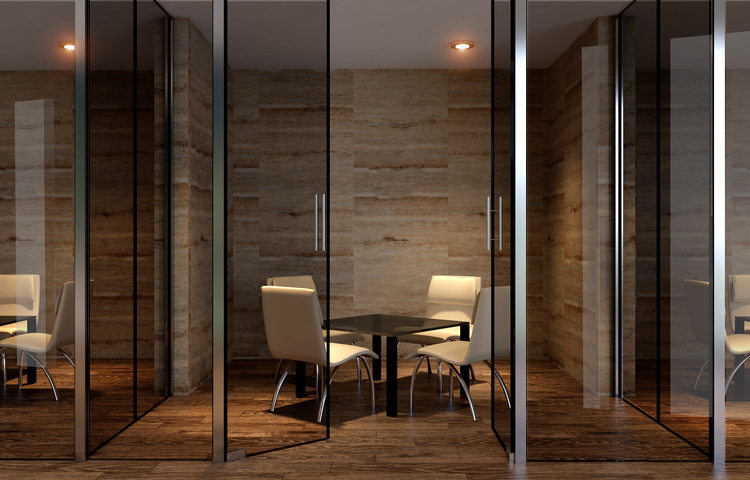This is a 9% increase from 2020, the year when office take-up fell due to the COVID pandemic and the function of the office as a workplace came under attack. Against the initial expectations of 2020, office users are now fully engaged in relocation and the orientation into new office space.
The 9% increase was realized under persistently tight market conditions with an average national vacancy rate of 8.4%, only slightly higher than the lowest level in 2002. For 2022, Cushman & Wakefield expects demand in prime locations to significantly exceed supply.
Jeroen Lokerse, CEO Cushman & Wakefield Netherlands says: “The pandemic has not led to less demand for offices, but more demand from other offices. Office users want buildings of very high quality, sustainable and focused on health and well-being in prime locations in city centers. They want to be housed in places with good accessibility, where high-quality facilities are close by and where you can combine work with meeting. It is not a question of fewer meters, but different use of meters in other places. Demand will increase further in the coming years and the shortage will become comparable to what is happening in the housing market.”
More meters put into use every quarter
In 2020, transaction dynamics dropped to an all-time low of 952,000 m2 from the second quarter. In 2021, on the other hand, an upward trend was visible in which take-up was higher each quarter than the previous quarter. Cushman & Wakefield explains this from the renewed focus of office users on housing issues after they were shelved in 2020.

Jan Verhaegh, Head of Office Consultancy: “Almost all rehousing processes that came to a halt when the pandemic broke out in March last year have now been resumed. Companies are reassessing their housing strategy on the basis of newly acquired insights, including measures aimed at well-being. In addition, they mainly use the workplace as a weapon in the War for Talent. A good, tailor-made workplace strategy plays an increasingly important role in this. Although more flexibility around communal meeting spaces is a regular feature, there is certainly a certain reappraisal for the office as a place to actually work (behind a desk). This trend is moving towards a more diverse use and not so much towards less use of office meters.”
Amsterdam office market leads the way
The positive sentiment in the office market was led in the summer months by smaller office users and companies in the Tech sector, followed by larger corporate organizations and government departments in the third and fourth quarters. The top 5 largest transactions of 2021 are led by the Central Government Real Estate Agency with the purchase of two office buildings for its own use with a total of 40,600 m² in the Binckhorst in The Hague.
The other transactions in the top 5 took place in Amsterdam, the city that accounted for almost a quarter of the total national take-up in 2021:
2. Takeaway.com rented 17,500 m² on the Piet Heinkade;
3. Czech IT service provider Jetbrains rented 12,500 m² in the Terrace Tower on the Zuidas, which was completed in 2021;
4. De Brauw, Blackstone Westbroek moves from The Rock on the Zuidas to a new 19,000 m2 office in Tripolis Park on the Zuidas;
5. G&S, Arcadis and BNP will be the new tenants of The CubeHouse (17,000 m2) with which the last remaining plot in the Mahler plan area on the Zuidas will be filled.


The largest share of office take-up comes from government and non-profit office users (32%) followed by business services (25%) and the office segments of industry, trade and transport (25%). The share of the Tech sector is the smallest at 17%. This share is lower than last year, but a result of the increased transaction dynamics in the other sectors. They took a wait-and-see attitude towards their housing strategy in 2020 and the first half of 2021, but they did come on the market in the course of 2021. The office dynamics in Amsterdam confirm that if you add supply in desirable locations, the transaction dynamics there also immediately increase.
Outlook 2022
Cushman & Wakefield is positive about the prospects for the office market in 2022. According to the advisor, the office user market has shown itself to be resilient and the consequences of lockdowns have been clear and manageable so far. The pipeline of housing projects to be started for 2022 is currently very well filled. More than COVID, the shortage of high-quality offerings in prime locations in major cities will hold back the uptake.
Too little high-quality offer at top locations
If all currently known housing movements actually result in new occupation, this will lead to an annual take-up of approximately 1.1 million m² in 2022. Crucial here is the availability of sufficient high-quality supply at the top locations in the Netherlands. This is currently about the same level as at the end of 2020 with a slightly higher vacancy rate from 8.2% to 8.4%. In the G5 there is even a supplier's market, because the vacancy rate there (except in Rotterdam) is below the desired level of frictional vacancy. The advisor foresees further polarization in the office market before 2022, because demand is increasingly concentrated in cities with the least supply.

Jos Hesselink, Research Lead Netherlands: “The Dutch economy has recovered very quickly in the course of 2021. Concerns about rising unemployment have given way to concerns about acute shortages of personnel in virtually all sectors of the economy. Commercial organizations are currently doing everything they can to entice talent to come and work for them. An important secondary employment condition is being able to offer an inspiring working environment at high-quality locations. This means that employers are careful not to return (perhaps too much) office space to the market, especially now. Also in view of the relatively sharply rising rents at these locations as a result of the current supply shortage in recent years”.





